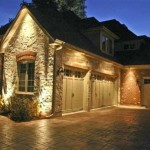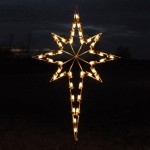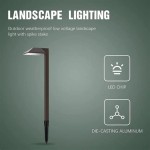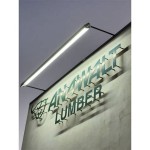How To Hang Outdoor Patio String Lights
Transforming an outdoor patio with string lights can create a warm and inviting ambiance, perfect for entertaining guests or enjoying a peaceful evening. Proper planning and execution are essential to ensure the lights are hung securely, safely, and aesthetically pleasing. This article provides a comprehensive guide to hanging outdoor patio string lights effectively.
Before embarking on the installation process, consider several factors. The size and shape of the patio will dictate the quantity of lights required. The desired mood and style will influence the type of string lights chosen, ranging from classic incandescent bulbs to energy-efficient LEDs. Finally, the structural elements of the patio, such as trees, fences, or existing posts, will determine the optimal hanging strategy.
Planning and Preparation for String Light Installation
Thorough planning is paramount to a successful string light installation. This phase involves assessing the area, selecting the appropriate materials, and developing a detailed layout. A haphazard approach can lead to uneven spacing, insufficient support, and potential safety hazards.
Begin by measuring the perimeter of the patio or the area where the lights will be hung. This measurement will help determine the total length of string lights needed. It is always advisable to purchase slightly more lights than initially calculated to account for any unforeseen circumstances or design adjustments. Account for the distance from the end of the light strand to the nearest outlet. Outdoor rated extension cords may be required if the reach is substantial.
Next, evaluate the existing structural elements of the patio. Trees, fences, and posts can serve as natural anchor points for the lights. If these elements are not readily available, consider installing additional support structures, such as poles or hooks. The placement of these supports should be carefully considered to ensure even distribution and a visually appealing arrangement.
Choosing the right type of string lights is crucial. Incandescent bulbs offer a warm, traditional glow but consume more energy and have a shorter lifespan than LEDs. LED string lights are energy-efficient, durable, and available in a wide range of colors and styles. Ensure the chosen string lights are specifically designed for outdoor use and are weather-resistant. This will protect them from rain, snow, and other environmental elements.
Gather all necessary materials before starting the installation process. This includes string lights, support structures (if needed), hooks, clips, zip ties, wire cutters, a measuring tape, a level, and a power drill (if installing new support structures). Having all these materials readily available will streamline the installation process and prevent delays.
A detailed layout plan is essential to visualize the final arrangement of the string lights. Sketch out the patio area and mark the location of existing support structures or proposed locations for new supports. Determine the desired spacing between the lights and the overall pattern. This plan will serve as a guide during the installation process and help ensure a consistent and aesthetically pleasing result.
Installing Support Structures for String Lights
In many cases, existing structures on the patio will not be sufficient to support the string lights. Installing additional support structures, such as poles or posts, may be necessary to achieve the desired look and stability. The type of support structure will depend on the patio's design and the homeowner's preferences.
Wooden posts are a popular choice for supporting string lights. They can be easily installed in the ground or attached to existing structures, such as a deck railing. Use pressure-treated lumber to ensure the posts are resistant to rot and insect damage. The height of the posts should be determined by the desired height of the string lights. Typically, a height of 8 to 10 feet is sufficient for most patios.
Metal poles are another option for supporting string lights. They are durable, weather-resistant, and available in a variety of styles. Metal poles can be purchased pre-made or custom-fabricated to meet specific requirements. They can be installed in the ground using concrete or attached to existing structures using brackets.
When installing posts in the ground, dig a hole that is at least one-third the length of the post. For example, for an 8-foot post, dig a hole that is at least 2.7 feet deep. Place the post in the hole and fill the hole with concrete. Use a level to ensure the post is plumb before the concrete sets. Allow the concrete to cure completely before attaching the string lights.
Eye hooks and screw hooks are essential for attaching the string lights to the support structures. Eye hooks are typically used for attaching the lights to posts or trees, while screw hooks are used for attaching the lights to fences or walls. Choose hooks that are appropriately sized for the string lights and are made of durable, weather-resistant materials.
Install the hooks at the desired height on the support structures. Ensure the hooks are securely fastened to prevent the lights from sagging or falling. Use a power drill to create pilot holes for the hooks if necessary. If attaching hooks to trees, avoid damaging the bark by using tree-friendly straps or hooks with wide bases.
Hanging the String Lights Safely and Effectively
Once the support structures are in place, the final step is to hang the string lights. This process requires careful attention to detail to ensure the lights are hung safely, securely, and aesthetically pleasing. Proper tension and spacing are key to achieving a professional-looking result.
Begin by attaching one end of the string lights to the first anchor point. Use a carabiner clip or zip tie to secure the lights to the hook. Avoid wrapping the lights directly around the hook, as this can damage the wiring. Ensure the connection is secure and that the lights are not pulling excessively on the hook.
Continue to string the lights between the anchor points, maintaining consistent tension. Avoid creating excessive slack, as this can cause the lights to sag and look unkempt. Conversely, avoid overtightening the lights, as this can strain the wiring and potentially damage the bulbs. Aim for a balanced tension that provides a clean and even appearance.
Use additional clips or zip ties to secure the lights along the length of the strand. This will prevent the lights from swaying excessively in the wind and will help maintain a consistent spacing. The spacing between the clips should be determined by the overall design and the desired level of stability.
When connecting multiple strands of string lights, ensure the connections are properly sealed to prevent water damage. Use waterproof connectors or electrical tape to protect the connections from rain and moisture. Overloading a single circuit is a fire hazard, so check the maximum wattage rating of the string lights and the circuit before connecting multiple strands.
Consider using guide wires to provide additional support, especially for long spans between anchor points. Guide wires can be made of steel or nylon and should be strung tautly between the anchor points. Attach the string lights to the guide wire using clips or zip ties. This will help prevent the lights from sagging and will ensure a more stable and aesthetically pleasing installation.
Once the lights are hung, inspect the entire installation for any potential hazards. Ensure all connections are secure, that the lights are not rubbing against any sharp objects, and that the wiring is properly insulated. Test the lights to ensure they are functioning correctly and that there are no shorts or other electrical issues.
Consider installing a dimmer switch to control the brightness of the string lights. This allows for adjusting the ambiance to suit different occasions and can also help conserve energy. Choose a dimmer switch that is specifically designed for outdoor use and is compatible with the type of string lights being used.
Regular maintenance is essential to prolong the life of the string lights. Periodically inspect the lights for any signs of damage or wear and tear. Replace any damaged bulbs or wiring promptly. Clean the lights regularly to remove dirt and debris. Store the lights indoors during the off-season to protect them from harsh weather conditions.

How To Hang Patio Lights

28 Backyard Lighting Ideas How To Hang Outdoor String Lights

How To Hang Outdoor String Lights And Make Them Look Good Wirecutter

How To Hang Patio Lights

How To Hang Outdoor String Lights The Ultimate Guide Jessica Welling Interiors

How To Hang String Lights Outdoors

How To Hang Outdoor String Lights And Make Them Look Good Wirecutter

Diy Backyard String Lights Taryn Whiteaker Designs

How To Hang Patio Lights

How To Hang Outdoor String Lights A Step By Guide Govee







